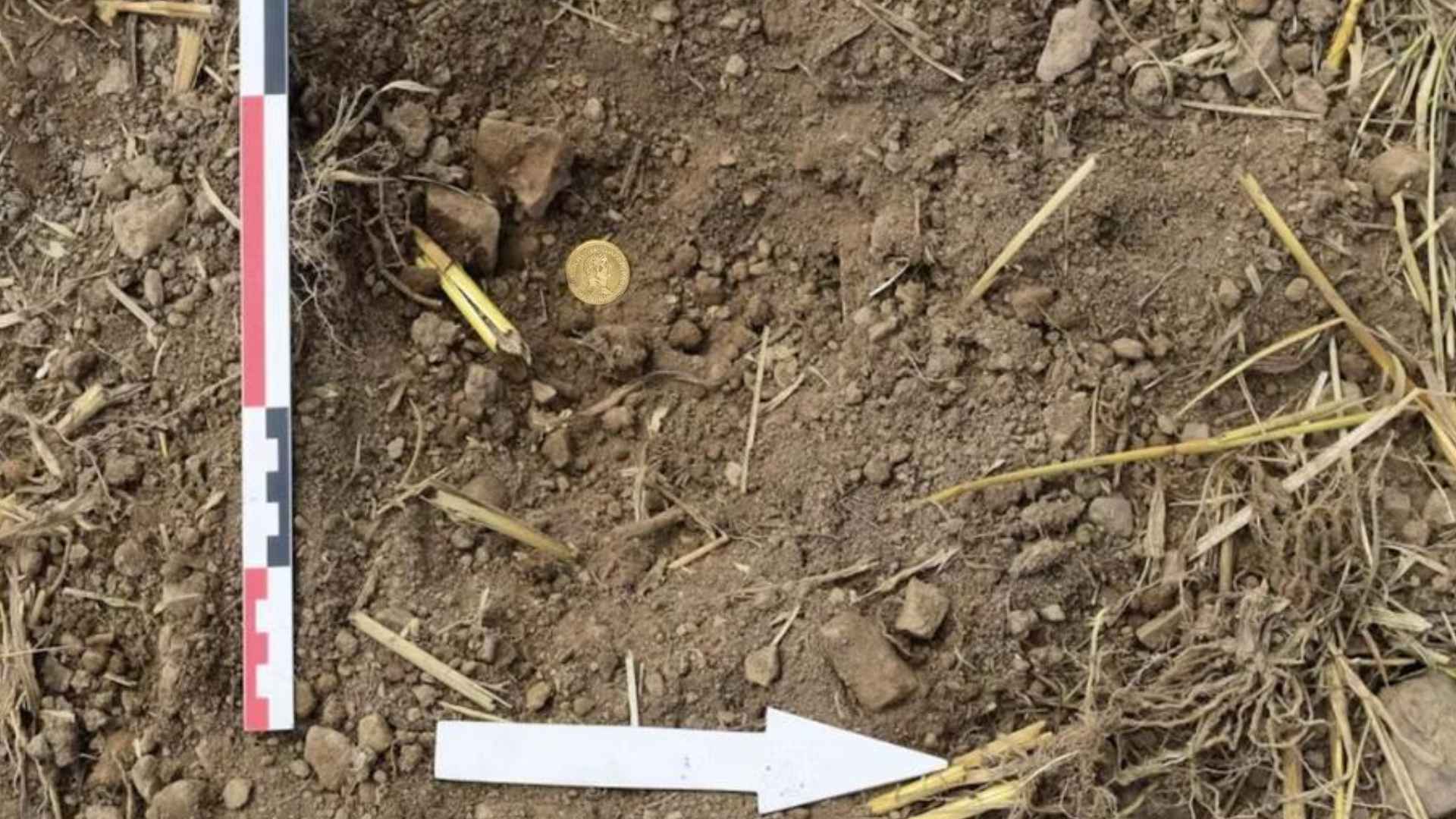After countless hours of methodical searching, a determined metal detectorist named Ron Walters struck gold—literally—by discovering a Roman coin dating back to 69 A.D. near the English town of Dudley. His patience and persistence paid off, unveiling a rare artifact that has astonished experts and collectors alike.
Ron Walters, 76, spent six years carefully scanning fields in Wall Heath, returning each spring and fall with unwavering dedication. At last, he came upon an astonishing find: a Roman coin featuring the profile of Emperor Aulus Vitellius, who ruled for a brief eight months. To everyone’s surprise, it appears to be the first of its kind found in the United Kingdom. Specialists believe its rarity is linked to both the coin’s emperor and the coin’s pristine gold content.
Why is this ancient Roman coin causing such a stir among collectors?
Determined treasure hunters sometimes spend decades tracking elusive finds, but Walters’ discovery is especially notable due to Emperor Vitellius’s short reign during the turbulent “Year of the Four Emperors.” According to the BBC, coins from this period are exceedingly scarce, which propelled the auction value above £5,000 (about $6,400).
Here is how this remarkable 1,900-year-old Roman coin stood out from later third and fourth-century artifacts
- Incredibly early date (69 A.D.), placing it in the first century
- Profile of a rarely depicted ruler, Aulus Vitellius
- High gold purity, reflecting precious metal standards of the era
Walters jokingly credits his wife for pushing him out of the house on the day he finally found the coin. The moment he saw it drop from a clump of earth, he said his heart was pounding. Are you wondering how he reacted? He tucked it safely in his pocket and headed straight home.
Explaining the historical significance behind Emperor Vitellius’s short rule and how it shaped Roman coinage that reached England
Historians suggest Vitellius came into power following Emperor Otho, only to be overtaken by Vespasian. This rapid turnover makes coins bearing Vitellius’s image extraordinarily unusual. Walters believes a Roman soldier may have traveled with it through continental Europe before it ended up in Britain.
After taking a 1,900-year rest, the coin journeyed once more—this time to an eager collector in Scotland. Below is a concise table of key facts:
| Discovery Details | Information |
|---|---|
| Finder | Ron Walters, 76 |
| Location | Wall Heath near Dudley, England |
| Ruling Emperor on Coin | Aulus Vitellius (ruled for 8 months) |
| Auction Price | Over £5,000 (approx. $6,400) |
| Historical Significance | First-century Roman artifact in the UK |
In the end, this extraordinary find is about more than just monetary value. It represents a vibrant piece of history, bridging modern-day England and the ancient Roman Empire. For anyone dreaming of making a groundbreaking discovery, Ron Walters’s journey proves that persistence, along with a keen eye, can unveil treasures hidden just beneath our feet.

